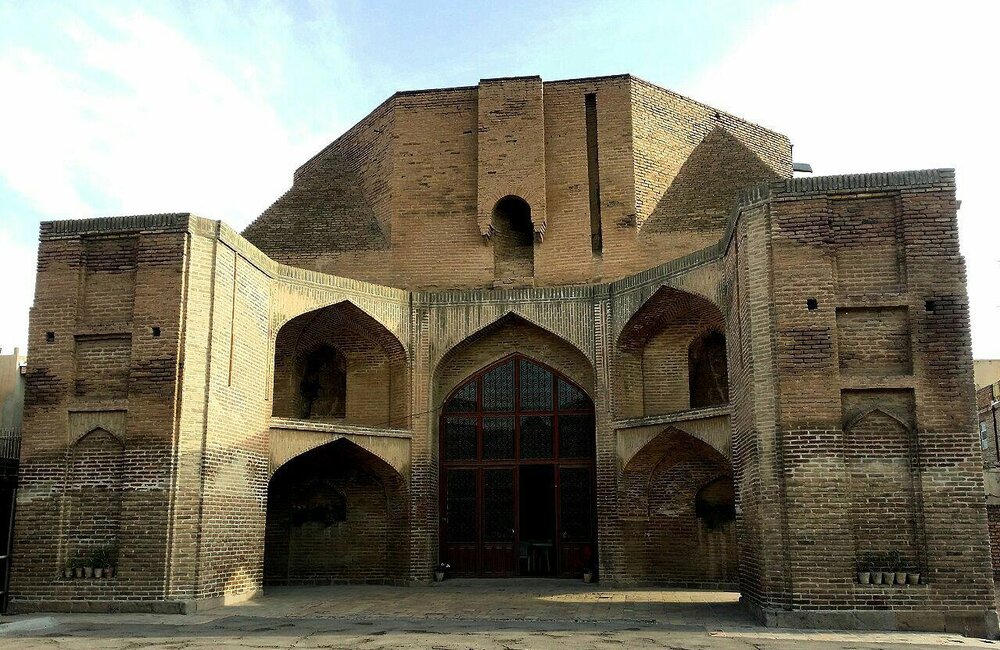Heydariyyeh Mosque: secrets of one of ancient places of worship

TEHRAN – Masjid-e (the mosque of) Heydariyyeh is a magnificent monument from the Seljuk period, presumably from the late 12th or early 13th century. There is a wonderful air of calm that surrounds the place of worship, which is located in the Bolaghi district of Qazvin, north-central Iran.
Under the Qajar dynasty in the 19th century, the modest mosque was incorporated into the structure of a madrasa. However, most parts of this madrasa were later demolished to make way for the construction of an elementary school in 1955.
The stylistic features of the Heydariyyeh mosque that consists of a single domed chamber prayer hall resemble those of the Friday Mosque of Qazvin, and it is therefore assumed that the Heydariyyeh Mosque was built or renovated by the same architect, according to Archnet.
This mosque was located on the south side of a courtyard, which was surrounded by the madrasa's arched cells on its east, west, and north sides. Based on André Godard's plan of the madrasa, the entrances to the complex were located on the northeast and northwest of the courtyard, and there were once nine cells on the east and west sides next to the entrances. The north side of the madrasa was comprised of a central iwan flanked by three cells on each side.
According to Arthur Pope's plan of the Heydariyyeh Mosque, the square plan of its Seljuk prayer hall is 14 by 14 meters on the outside and 10 by 10 meters on the mosque's interior.
The mosque is entered from the north, where an entrance iwan, measuring six by 14 meters, was later added to the Seljuk structure. The domed chamber of this mosque is structured similarly to Sasanid Chahar-taq fire temples, within which the square plan is transformed into an octagon via squinches that support a brick dome. However, the dome of this mosque is no longer extant. A recent temporary roof now protects the interior space.
The mosque is constructed of brick and is famous for its splendid brickwork facing and carved stucco decorations. Additionally, its decoration is remarkable for its early glazed tiles. Arched niches in interior corners are topped with carved stucco inscriptions and muqarnas brick decorations. The rhombus brick patterns on the squinches are decorated with inscribed bas-relief circles. There is also a fine floriated Kufic plaster inscription frieze below the dome arches. Some of the inscriptions are from the Surah Hashr in the Quran.
The mihrab on the south wall of the prayer hall is composed of finely carved stucco on a painted blue background. Although the bottom half of the mihrab has been damaged, it remains one of the finest examples of Iranian stucco mihrabs. Stylized high-relief pomegranates and pine cones are found on the frame around the mihrab and the arch of the dome above the mihrab.
A Muslim-majority country, Iran is home to many gorgeous churches and chapels that feature amazing architecture and exquisite ornate works. Moreover, the ancient city of Qazvin is blessed with some historical churches and Armenian neighborhoods, which are visited as travel destinations for their splendor and architectural beauty.
Qazvin was once the capital of the mighty Persian Empire, under Safavids, from 1548 to 98. It is a major tourist destination with a wonderfully restored caravanserai-turned-arts precinct, some quirky museums, and a handful of decent eating options. For most travelers, Qazvin is also primarily the staging point for excursions to the famous Castles of the Assassins and trekking in the sensational Alamut Valley.
The city is also home to one of the biggest roofed caravanserais of the country, Sa’d-al Saltaneh caravanserai. Dating back to the Qajar era, it’s a place for discovering tens of Hojreh or shops, cafes, yards, and a stunning mosque. It’s a place for visitors who want to experience the culture, culinary, and hospitality of Iran.
AFM
Leave a Comment